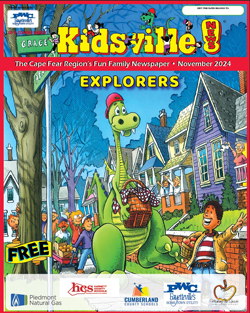 Seventeen days, not seven — The North Carolina General Assembly reduced early voting opportunities a few years ago to only seven days. But when the federal courts got involved, one-stop voting rules were changed. The Republican-dominated Cumberland County Board of Elections declined to implement changes ordered by the court, so the State Elections Board did so. Now, North Carolina voters have 17 days to vote early this year. There are 10 locations to cast early ballots.
Seventeen days, not seven — The North Carolina General Assembly reduced early voting opportunities a few years ago to only seven days. But when the federal courts got involved, one-stop voting rules were changed. The Republican-dominated Cumberland County Board of Elections declined to implement changes ordered by the court, so the State Elections Board did so. Now, North Carolina voters have 17 days to vote early this year. There are 10 locations to cast early ballots.
Early voting begins on Thursday, Oct. 20 and continues through Saturday, Nov. 5 and includes two Sunday afternoons. There are 10 early voting locations in Cumberland County. They are the Board of Elections Office on Fountainhead Lane in Downtown Fayetteville, Kiwanis Recreation Center on Devers Street, Smith Recreation Center on Slater Avenue, North Regional Library on McArthur Road, East Regional Library on Clinton Road, Cliffdale Recreation Center on Cliffdale Road, Grays Creek Recreation Center on School Road, Hope Mills Recreation Center on Rockfish Road, E.E. Miller Recreation Center on Rim Road and Spring Lake Community Center on Ruth Street. For hours, contact the Cumberland County Elections Office at 678-7733. It should be noted that early voting localities are not necessarily the location of election day voter precincts. If you do not know where your election day polling place is, you can use www.ncsbe.gov to find your voting precinct and location.
Voters are no longer required to present photo identification at the polls. However, certain first-time voters must provide proof of identity if they did not do so when they registered. Individuals may once again register and vote on the same day during the early voting period. Curbside voting is available at all voting locations for disabled individuals. The elections office also provides assistance to persons in hospitals, clinics, nursing homes and other care facilities. Again, the local board of elections should be contacted.
Of all the states, the best early voting statistics are available for North Carolina, where absentee voting by mail began on Sept. 9. Requests for absentee ballots by registered Democrats and unaffiliated registered voters are running ahead of 2012, for the same number of days prior to the election. Requests by registered Republicans are down. Given that Mitt Romney beat Barack Obama by two percentage points, the early voting statistics appear to confirm polling averages which show a narrow lead for Hillary Clinton. According to the U.S. Constitution, the 2010 Census Reapportionment provides that North Carolina will have 15 electoral votes through the 2020 presidential election. North Carolina, which was one of the original 13 colonies, entered the Union in November 1789. Like many other southern states, it voted almost exclusively Democratic from 1876 through 1964. Tar Heel voters flipped and began voting Republican in 1968. The shift was largely in response to white conservative voter uneasiness with Civil Rights legislation passed in the mid-1960s. In 2008, Barack Obama reversed the trend of Republican dominance in North Carolina barely defeating John McCain by about 14,000 votes out of 4.3 million cast. It was the second closest race of the 2008 election (behind Missouri). In 2012, North Carolina was again the second closest race (this time behind Florida) as the state flipped back to Republican and Mitt Romney beat Obama by about 2 percent. This year, the Tar Heel State is a toss-up battleground, given the flip flops of the last two Presidential elections.

 How to resolve AdBlock issue?
How to resolve AdBlock issue? 








